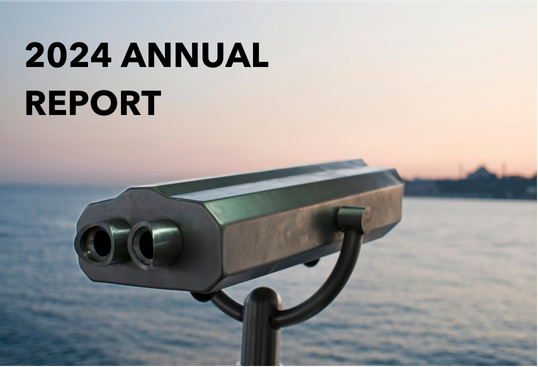In this new environment, as restrictions are being lifted, we assess our behaviours daily against potential health outcomes – we are stress-testing our comfort with health risks. Should we go out? Should we visit loved ones who feel isolated? Should we wear a mask at the grocery store? Should we accept an invitation to have a bite to eat in our best friend’s backyard? Should we let our children play with their friends?
We talk to our families, neighbours, friends, coworkers and even strangers to see how they are approaching similar questions. We listen to the incessant updates provided online and in the media. We weigh these multiple data points to make the best-educated decisions we can, given the information and our comfort level. And as more information is provided, we adjust.
Not everyone has the same comfort level. We have different lived experiences and different realities. If you or a family member are immuno-compromised, you are more likely to avoid taking risks. If you live with an elderly parent, you may decide to take extra precautions. For some, their inherent obsessive compulsiveness about cleanliness and fear of germs that existed pre-COVID-19 has made this environment even more difficult to deal with.
We weigh our willingness and capacity to take risk and the question that naturally poses itself to us as we manage investments in this environment for our clients, is should investment risk tolerances be re-assessed as well.
How often should you reassess your risk tolerance?
Before answering specifically for this environment, it makes sense to take a broader view on risk tolerances and how they change or evolve over time for most clients.
Your risk tolerance should be assessed when an account is opened and a relationship formed with an investment advisor. At that point, a series of questions allows investors to assess their risk tolerance so their advisor can ensure the portfolio that is constructed is aligned with their client’s risk tolerance. It is an important and useful discussion that weighs past experiences, time horizons, preferences and capacity for taking risk.
Risk tolerance often changes over time and should be reassessed through major events. For example, when someone gets married and has children, their risk tolerance can change. Likewise, when someone approaches retirement, they tend to reduce their ability and willingness to take risk. Divorce and death can also majorly impact risk tolerances. Risk is often overestimated for newer investors, especially when they begin investing in a bull market where returns have been positive for a number of years. The opposite can be said for an investor who has experienced a major downturn.
While it is a good idea to consistently validate your risk tolerance; for example, every couple of years or during major life changes, it is best to have some consistency in an investment strategy. Unlike weighing health outcomes and potentially changing behaviours daily, portfolio risk should not change based on short-term data and emotions. For example, imagine the client who in March of this year saw the market declines, panicked and decided that they had too much risk in their portfolio, and so reduced the risk by selling equities. Later, seeing financial markets strongly rebound, this same client breathes a sigh of relief that economies and markets might be improving and decides they are more comfortable taking on risk. This client is breaking the first rule of investing. They are selling low and buying high. Their portfolio would have done much better if they had an appropriate investment strategy and stayed invested through the volatility.
When to speak to your advisor
The question that needs to be answered given the current investing environment is should an investor reassess their risk tolerance today. If you lost sleep over your portfolio and were uncomfortable with the volatility you experienced, you should speak to your advisor about reassessing your risk. Because portfolios and markets have rebounded, this is an opportune time to question your tolerance for financial risk and ensure that your portfolio is properly aligned.
At Tall Oak Private Wealth, we welcome continued conversations with our clients regarding their individual circumstances. We have been talking to many of you about your experience through these challenging times and ensuring you feel comfortable with how we have been managing your portfolio.
As always, we thank you for the trust you have placed in us to steward your portfolios. We continue to work hard on your behalf to ensure that we are managing your assets through these challenging times.
We welcome you to reach out to us to discuss your personal portfolios as we remain just a phone call away.
The views expressed in this commentary are those of Tall Oak Capital Advisors as at the date of publication and are subject to change without notice. This commentary is presented only as a general source of information and is not intended as a solicitation to buy or sell specific investments, nor is it intended to provide tax or legal advice. Statistics, factual data and other information are from sources Tall Oak believes to be reliable but their accuracy cannot be guaranteed. This commentary is intended for distribution only in those jurisdictions where Tall Oak Capital Advisors are registered. Securities-related products and services are offered through Raymond James Ltd., member Canadian Investor Protection Fund. Insurance products and services are offered through Gryphin Advantage Inc., which is not a member-Canadian Investor Protection Fund. This commentary may provide links to other Internet sites for the convenience of users. Tall Oak Capital Advisors is not responsible for the availability or content of these external sites, nor does Tall Oak Capital Advisors endorse, warrant or guarantee the products, services or information described or offered at these other Internet sites. Users cannot assume that the external sites will abide by the same Privacy Policy which Tall Oak Capital Advisors adheres to.
The views expressed in this commentary are those of Tall Oak Capital Advisors as at the date of publication and are subject to change without notice. This commentary is presented only as a general source of information and is not intended as a solicitation to buy or sell specific investments, nor is it intended to provide tax or legal advice. Statistics, factual data and other information are from sources Tall Oak believes to be reliable but their accuracy cannot be guaranteed. This commentary is intended for distribution only in those jurisdictions where Tall Oak Capital Advisors are registered. Securities-related products and services are offered through Raymond James Correspondent Services Ltd., member Canadian Investor Protection Fund. Insurance products and services are offered through Gryphin Advantage Inc., which is not a member-Canadian Investor Protection Fund. This commentary may provide links to other Internet sites for the convenience of users. Tall Oak Capital Advisors is not responsible for the availability or content of these external sites, nor does Tall Oak Capital Advisors endorse, warrant or guarantee the products, services or information described or offered at these other Internet sites. Users cannot assume that the external sites will abide by the same Privacy Policy which Tall Oak Capital Advisors adheres to.




